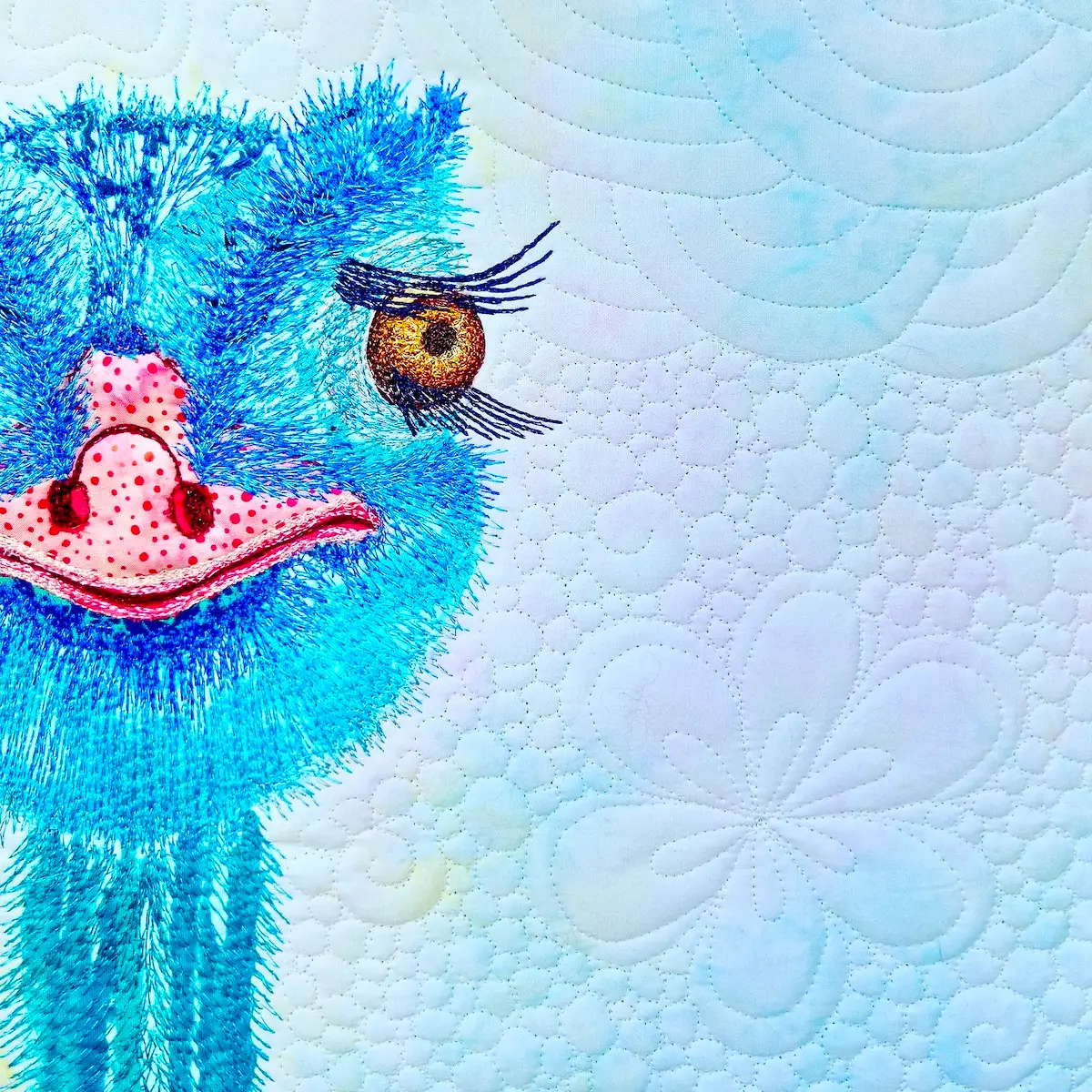Shelley Koss has been making art for as long as she can remember, exploring everything from fiber and thread to watercolor. Her work is rich with texture, color, and storytelling, shaped by a lifetime of curiosity and the inspiration she finds in the Arizona desert.

Tell us about the first time you knew you wanted to make art. What do you remember feeling?
Honestly, I can’t remember a time I didn’t want to make art. Even before kindergarten, I was constantly drawing and doing crafts. As a child, my favorite gifts were art kits. Each one felt like a doorway into a new world. I tried everything—My curiosity was endless. I was knitting, crocheting, sewing, embroidering, rug hooking, drawing, painting, sculpturing; you name it and I wanted to try it. I feel fulfilled when I am making art. It brings me comfort and peace.
When did you first discover fiber art and thread painting? What drew you to it?
I have made fiber art since kindergarten. As a child, I learned how to sew, knit, crochet, appliqué, and embroider.
As an Amazon Associate I earn from qualifying purchases. Read more about our affiliate linking policy.
My grandmother was in a sewing bee with her sisters, and they would make wedding quilts. My grandmother’s work and visits to Amish country were my first exposure to hand quilting.
I grew up in Ohio, where the quilting work of the Amish was often hung as wall art, and barns were painted with quilting motifs.
I think all that early childhood exposure found a home in my heart. The first time I saw thread painting in a magazine, I was an adult and I was awe-struck. I tried it and found out it was a silent skill waiting to be born.
How did watercolor become part of your practice? Which came first for you, fabric or paper?
I have bounced around between fiber and painting all my life.
Fabric became a central focus in 2007, and my life mostly centered around that technique for about 15 years.
In 2022, after my second spontaneous coronary artery dissection (SCAD) widow maker at age 54, I realized I needed to do the things I enjoy now, as there may not be a later. I started watercolor painting again in 2022.
It wasn’t until 2024 that I started blending them together. I first create a paper-based watercolor, and once I have the image, I recreate it on fabric and add quilting.
I love that an image can live within more than one medium. I had not been entering any exhibitions prior to 2022 and was only selling my art locally.
After my second SCAD in 2022, my husband really got in my ear, telling me over and over that I needed to start entering exhibitions. The rest is history. I consistently exhibit my fiber and watercolors now.
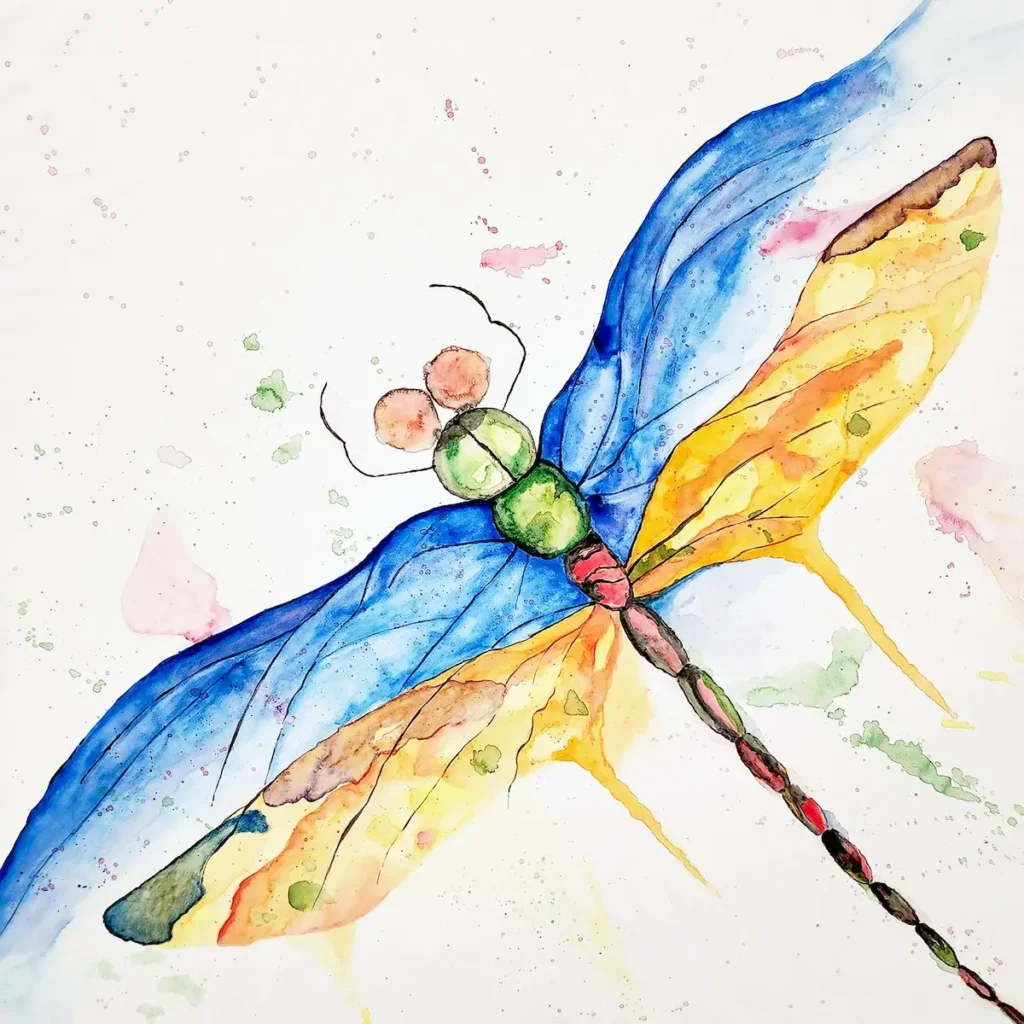
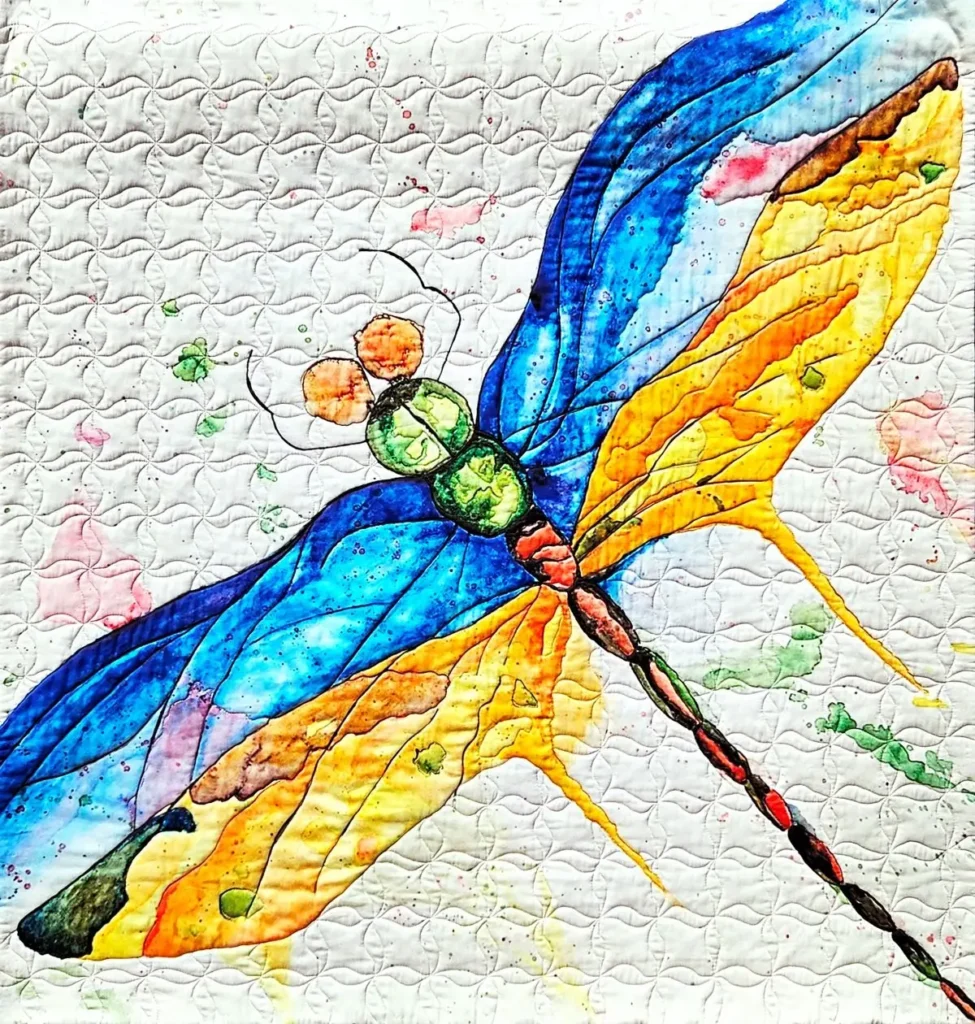
What do you do when you need fresh inspiration?
Inspiration is everywhere for me—it often just pops into my head! Every day life is full of ideas: people, animals, places, and even current events can spark creativity.
Travel is wonderful, but I could stay local and still find more inspiration than I could ever use. I love translating these glimpses of life into my fiber and watercolor art, capturing moments that might otherwise go unnoticed.
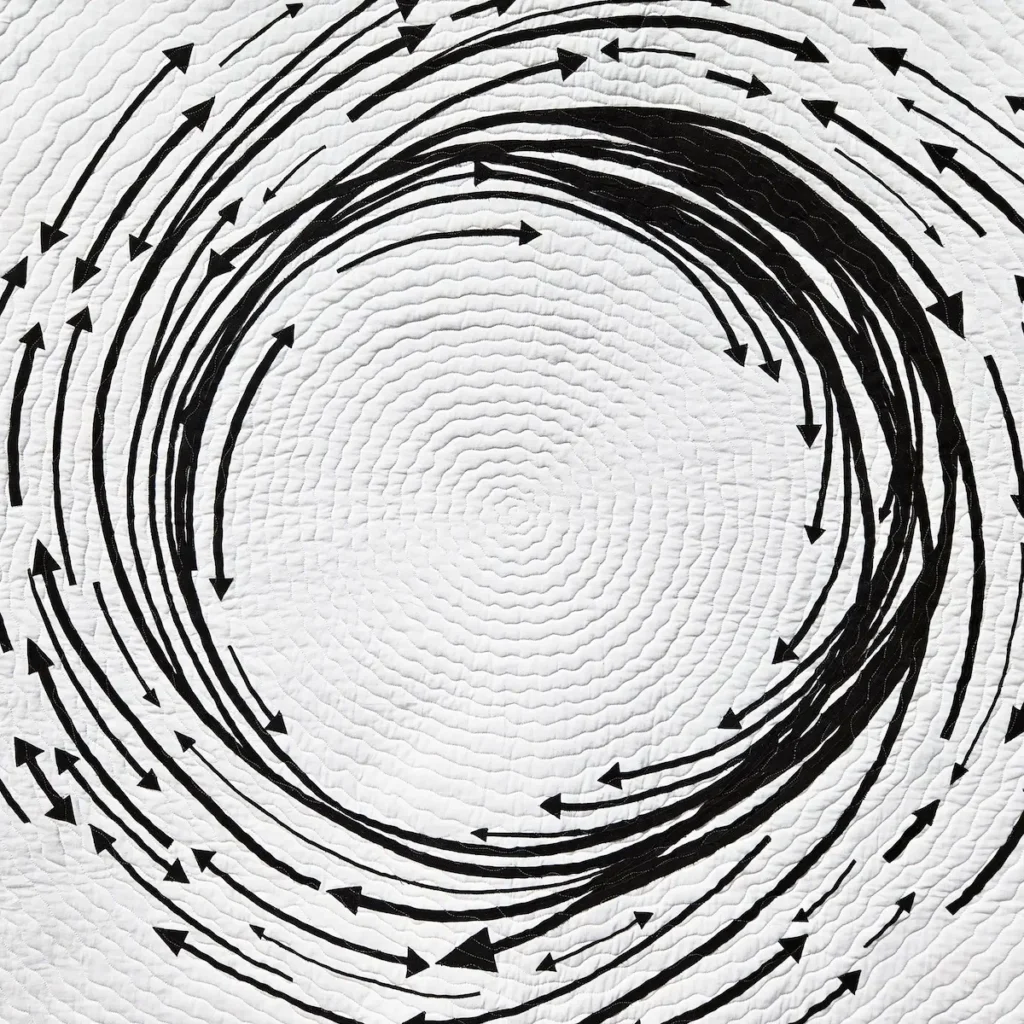
How does living in Arizona influence your palettes, textures, or subjects?
Arizona plants and animals are inspiration for me.
I live in a neighborhood that uses flood irrigation. It draws javelina, ducks, hummingbirds, rabbits, foxes, raccoons, and skunks.
My cactus thread painting is from a cactus that was freshly planted at one of my husband’s new design-builds. I used all the natural palette of the actual real-life cactus.
The fox thread paintings are inspired by a pair of foxes who regularly visit my property and are caught on my Ring camera. A family of rabbits lives between my and my neighbor’s properties. One day, a baby rabbit was sleeping in between my patio slider and the screen, and the sleepy rabbit was painted as a watercolor. I still have a lot of Arizona animals yet to be thread-painted.
My yarn couched jackets both used photographs of native flora as inspiration. I will be teaching a class on each of these yarn-couched creations in 2026 through the non-profit Fiber Arts Center of Arizona.
For my minimalist wall art, living in Arizona influences my work, but in a quieter, more structural way. I’m drawn to minimal forms, and the desert landscape actually emphasizes that—there’s a kind of clarity here. When you strip away excess, what’s left becomes very meaningful.
My palettes tend to come from the desert’s more reduced tones, a combination of the soft desert neutrals balanced with the bold colors of the desert in bloom as well as negative space formed by the deep shadows created here. Arizona light is very direct, so contrast matters—you see sharp divides between light and shade, and that graphic quality finds its way into my compositions.
I also think the landscape’s geometry influences me. Horizon lines, rock strata, the linear branching of ocotillo or saguaro—it all has a steady, ordered rhythm that I translate into simple forms and repeated structures. I’m not typically depicting the desert literally, but the sense of space here—the openness, the quiet, the room to breathe—comes through in the negative space and restraint in my work. The Arizona desert teaches you that minimal doesn’t mean empty; it means everything that’s there really matters.
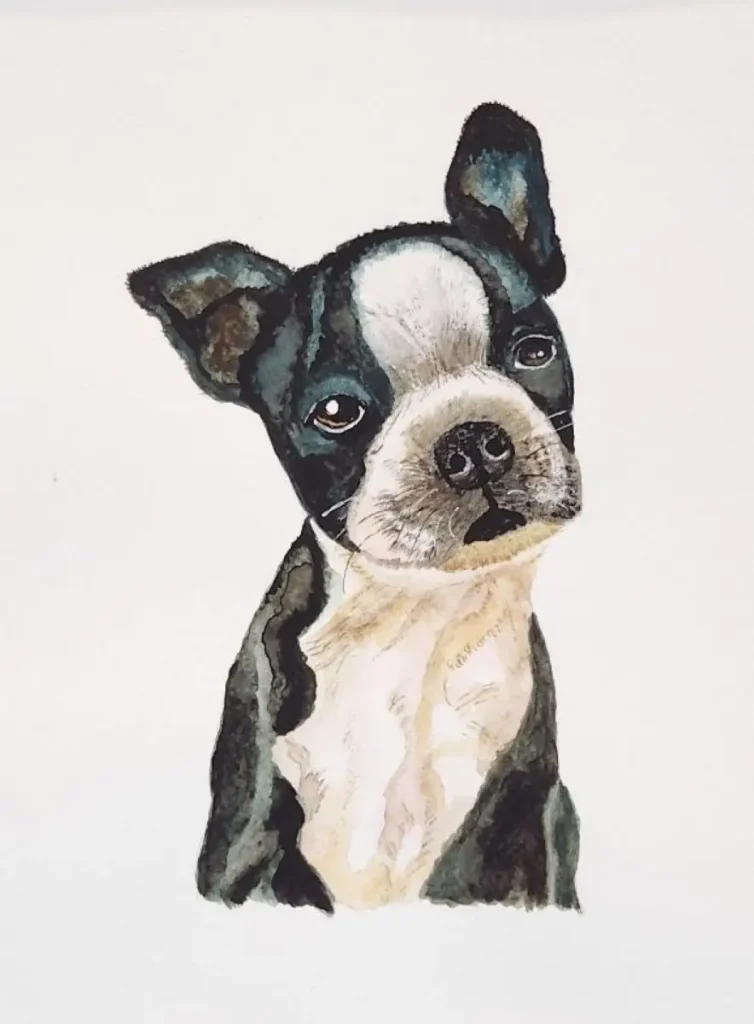
Describe your creative space.
My old studio was less than 300 square feet, and it was crammed with two sit down sewing machines, a serger, and a 14 foot long arm.
My husband took mercy on me and built a new 900 square foot studio gallery. Erik is an architect, so he thought of everything. I have a sink for dying, one built-in closet and one walk-in closet, gallery railing wrapping around every ceiling surface with adjustable lighting, a design wall, a ten foot by eight foot worktable with drawers, 19 feet of desk/sewing space, 20 feet of credenza space with drawers, a spot for my long arm so I can actually walk around it, and space for six students for teaching days.
A TV is mounted perfectly for viewing, so I can set up presentations for the students, and everyone will have the best seat in the house. Erik carefully thought about plug placement for each of my machines and hidden plug spaces in the closet for my bobbin winder, rotary blade sharpener, and other miscellaneous tools.
After seeing the tsunami that was my old office, Erik wanted to be able to provide me with a space that I could actually walk in without tripping over something. There is a space for Erik to work too, as I am often working late into the night, and this is how we spend time together. He designs houses, I create art.
My previous studio was a small 12’-by-17’ room overflowing with creativity—and equipment. Three sewing machines and a fourteen-foot long-arm quilting machine competed for every inch. I used to joke that I didn’t enter the space so much as slide into it sideways. It was a place of deep making, but also of constant contortion.
Recognizing both my devotion and my daily struggle, my husband Erik—who happens to be an architect—designed and built a new studio for me. It’s 900 square feet of intentional, thoughtful creative sanctuary. There is a design/layout wall and a deep sink for dye work. One built-in and one walk-in closet, both orderly and generous. Gallery railing traces every ceiling edge, with consistent lighting. A ten-by-eight foot rolling worktable anchors the room—solid and expansive, with drawers tucked neatly below. Generous desk and sewing space stretch comfortably along one wall, with a long run of credenza storage balancing the other. My long-arm now sits in its own zone, with room to walk around all sides and work freely.
There is space for six students, each with a clear view of a television for projecting live demonstrations and presentations. The lighting, the sight lines, even the plug placement—everything was planned: bobbin winder, rotary blade sharpener, and tools tucked away but ready.
Erik managed to sneak in a place for him to work too. I often create late into the night; he sketches and designs while I create art. This studio is not only my workspace—it is where we can create together.
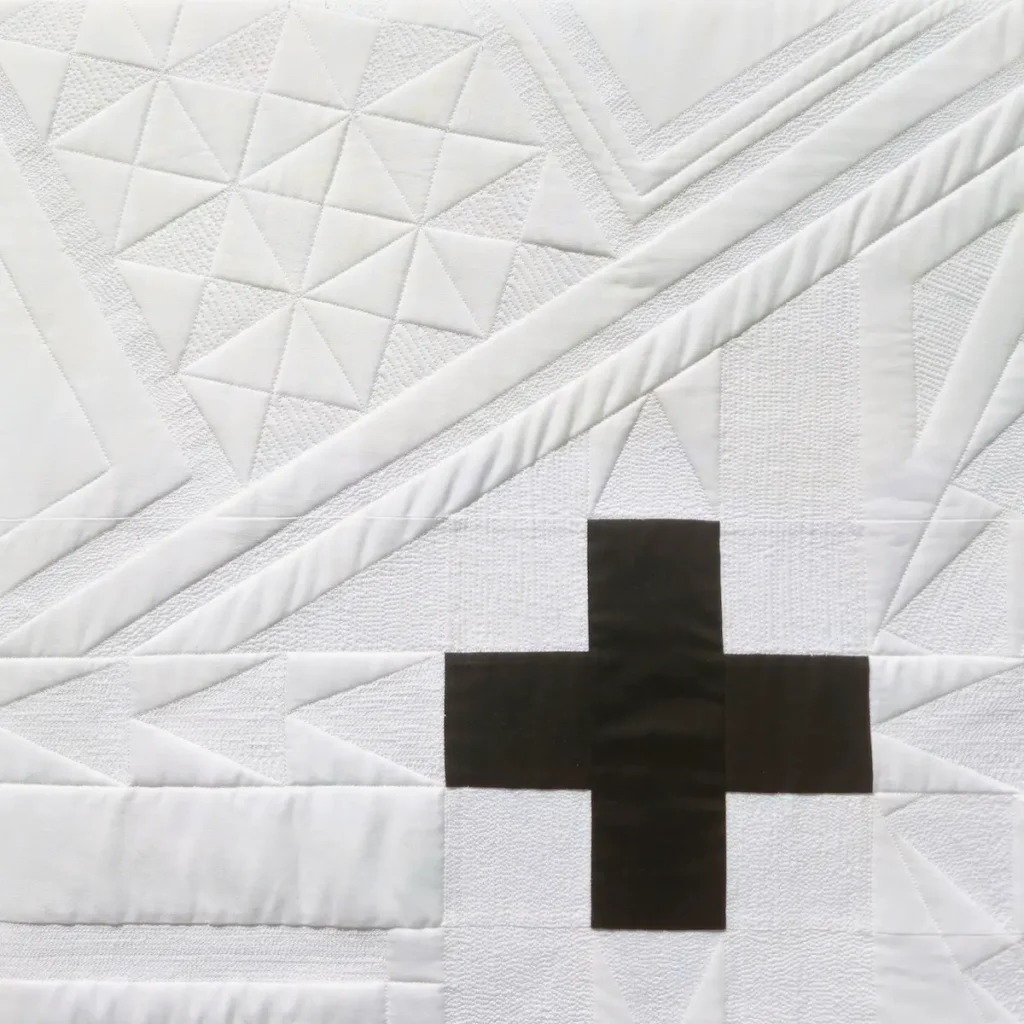
Walk us through a typical day in your studio. What’s the rhythm like?
I am a planner by nature. Everything is planned in my head before becoming reality. I will either use one of the Creative Cloud products on my computer, sketch, or do a mini version on paper. Sometimes, the computer designs turn into a mini project test, but not always.
I prefer to work in long, uninterrupted stretches. I usually have two or three projects going at once. That way if I am stuck trying to solve a problem I encountered, I can move to another one while the back of my brain works to solve the problem. My body may also give out.
I have a long arm, and that is a physically draining machine. I can switch back and forth between sewing and painting, which uses different forms of posture to give my body a break.
One thing I don’t do well is to do nothing. I have to keep creating. Art has always been my way of being present. When I am making, I feel grounded and whole. It gives me a sense of peace, purpose, and belonging.
Do you sketch first or dive straight into thread/watercolor? Why?
I sketch first. For watercolor it is a pencil sketch. For thread painting, I use water or air erasable ink. Air erasable can be a problem as it sometimes fades before the project is done so I would only use that on a small project I can do in a day or two. Water erasable ink works better for projects that will take days or weeks to complete.
Sometimes, I will paint directly on my fabric before thread painting. That may seem like a wasted step given it will be 100% covered by thread, but it helps to map in the highlights and shadows. Watercolor is best as it does not change the hand of the fabric.
I use a lot of Derwent Inktense products. Acrylic paint will stiffen the fabric and make it more difficult for the needle to get through the fabric. I have some other fabric paints, but Derwent is my favorite right now.
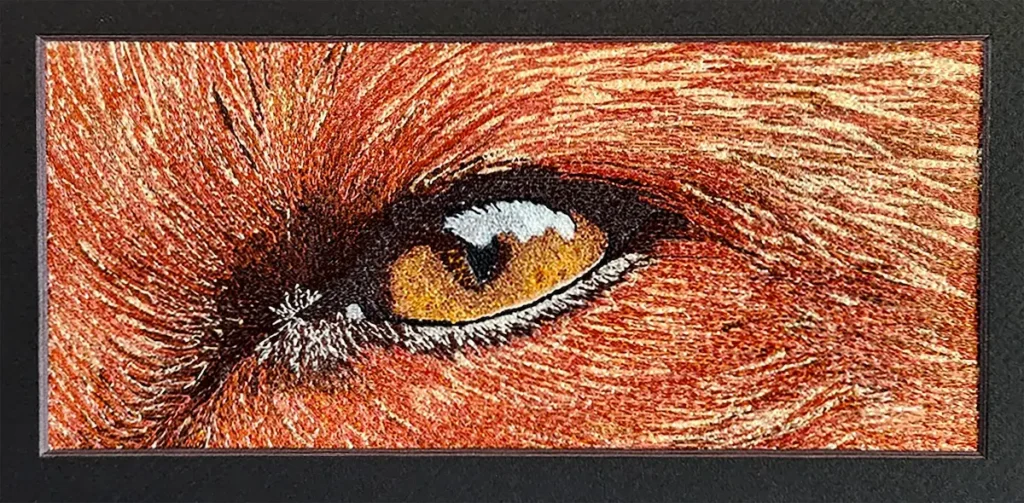
How do you choose fabric and threads to make sure a thread painting reads like a painting?
I have different methods depending on the style of the thread painting. I would not say there is one right or wrong way. It depends on how the final project will be displayed. For “Intensity” I used a cream fabric, as that is one of the colors in the fox’s fur and backed that with black fabric. That way any exposed needle holes (if any) will have dimension. I used matte threads with a heavier weight so the individual threads would read as an individual strand of fur.
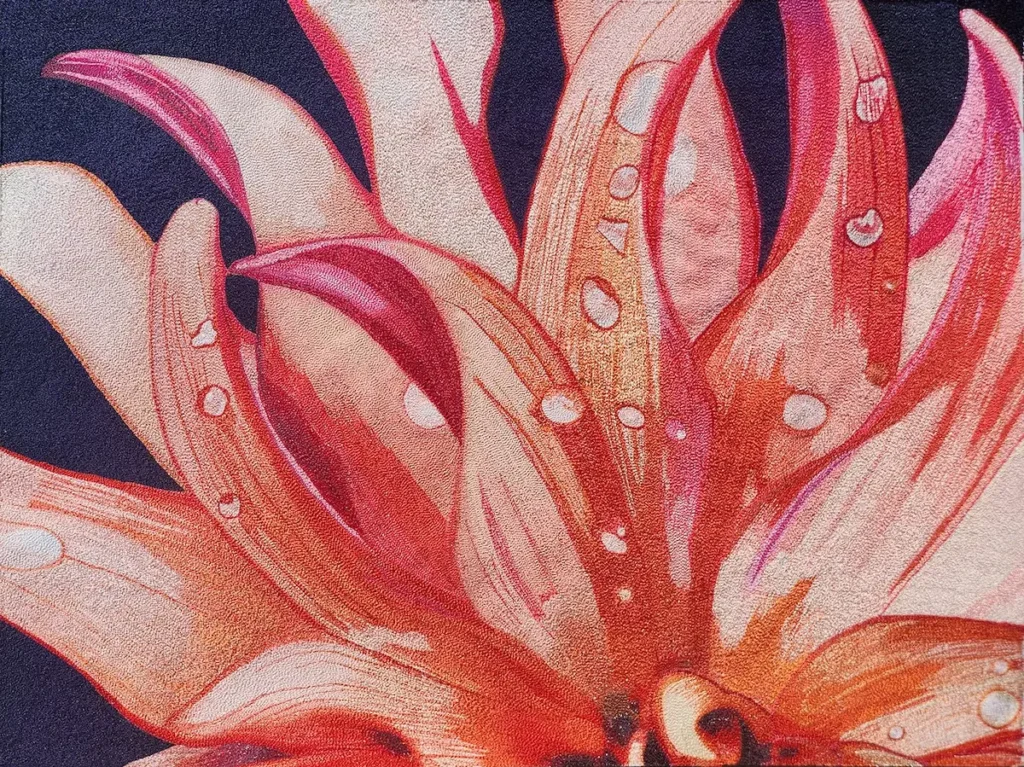
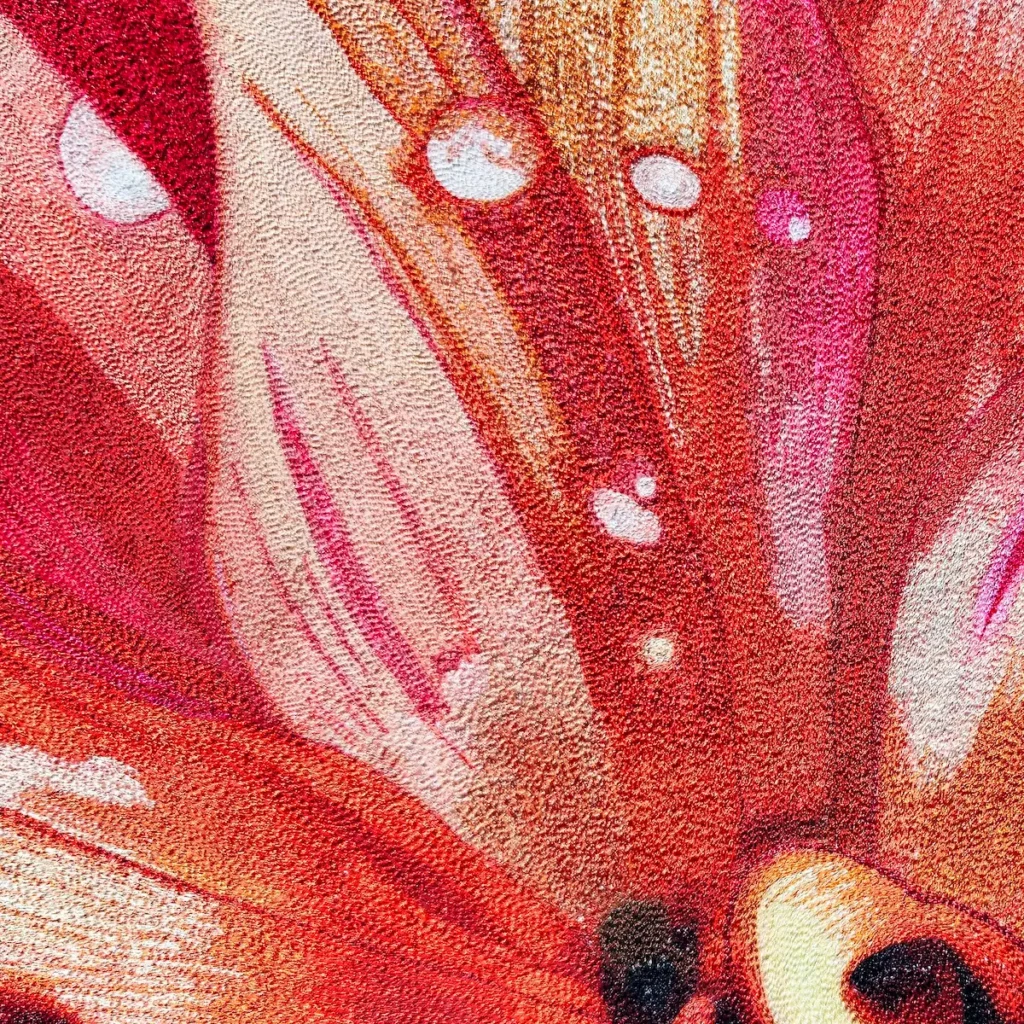
For “Bloom” I used polyester threads with sheen to create the feel of the wet petals and used a thinner weight thread since there needed to be more blending. I used matte threads strategically to create depth. The fabric underneath was cream, but as with “Intensity” is completely covered in thread..

Sassy Gal is a fabric collage with a thread sketched face. I am a purist and only use the word thread painting when the entire surface is covered and use the term sketching when the thread only covers certain areas of the fabric and leaves the fabric mostly visible. Therefore, the fabrics were particularly important since they would be visible in Sassy Gal and would create the contours of the face. The thread was used to create the important features of the bird in order to “read” as a bird face. Concentrating on the eyes was key to the image in Sassy Gal.
What’s the biggest technical challenge of turning thread into realistic fur or petals?
Choosing the right colors the first time and not overworking a piece. An overworked section can start to stretch and will be raised or depressed compared to other sections. That can be fixed to some degree in the framing process. In my early days, I definitely had to stuff projects into the back of my closet as reminders of what not to do. For people just starting out, know that even seasoned artists have to abandon half finished projects. It is all part of learning and developing.
The second challenge is to use the right kind of thread. Polyester is shiny and works great for shimmering eyes and wet or shiny petals. Matte cotton works great for non-shiny fur. Heavy weight works great for fur, but light weight thread works best for detail areas like eyes.
What mistakes did you make early on that taught you the most about thread painting?
Definitely, overworking pieces was a problem. The other problem was I wasn’t choosing dark enough threads for my shadows. My advice is to constantly step back from your piece and look at it from a four foot distance. That will be an “aha” moment of what your piece will need to reflect more realism. Looking at it from twelve inches away will distort your perspective on what it needs.
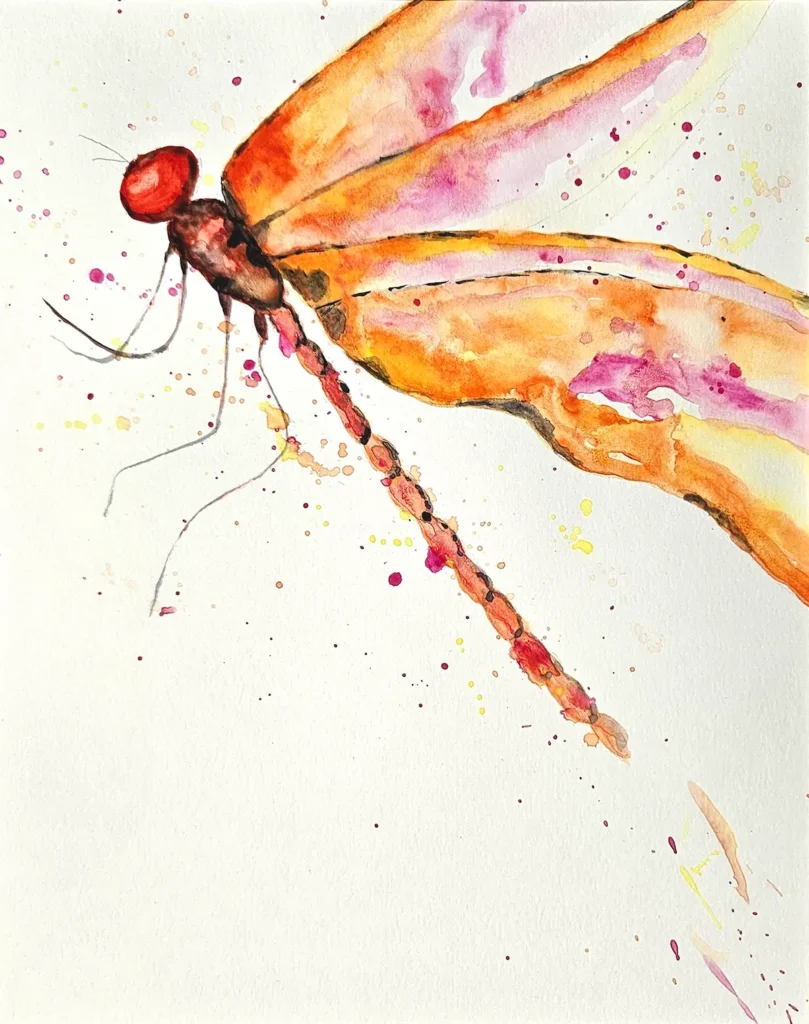
How does your watercolor work inform your thread painting (and vice versa)?
While they are different mediums, they are really doing the same thing—celebrating nature or telling a story. Using form and color to bring joy and hopefully an emotional reaction.
When a watercolor feels “finished,” how do you know? Is it the same feeling with fiber work?
While my initial watercolor session may be done in a day. I usually set aside a piece, sometimes for weeks, trying to focus on what details it needs to become finished. I will place it in a prominent place that I walk by often. When I can walk by and no longer think it needs anything else, then it is finished and ready for matting and framing.
Fiber work is different than watercolor painting. Fiber work takes weeks if not months to complete. My thread paintings have the same process as my watercolors. I will not consider it finished until I have had it sitting in a prominent place I walk by daily and can feel it does not need any more thread.
I often stop within each major section of the thread painting for this stop, walk by, and access process. For example, if I start with the eyes, I will stop after that section and set the thread painting in a prominent place and walk by it daily before moving on to say the nose. I work through the animal in sections using this method. It might sound like a slow process, but it works for me.
My quilting patterns are either improv or sketched out in advance. I wouldn’t say I have any one method to designing my quilting patterns. I let the piece speak to me and enjoy the ride.
Is there a medium you haven’t tried yet that you’re curious about?
I have sculptured in clay and plaster, but I have never sculptured in fabric. There are some artists doing amazing fabric sculptures that I find intriguing. Add it to my bucket list!
When a piece stalls, what do you do to move it forward?
I leave it alone and walk away for a while. My brain finds the best solutions when I am not actively thinking about it.
Solutions come to me in my dreams and while I am doing mundane activities. If I think too hard about a stalled piece, I can get frustrated, and I don’t like to feel frustrated. I am doing this for the fun and joy of it, so I just set it aside and wait for inspiration to strike.
I have also abandoned pieces before. Art is often an experiment, so there is no shame in finding out that an idea did not work.
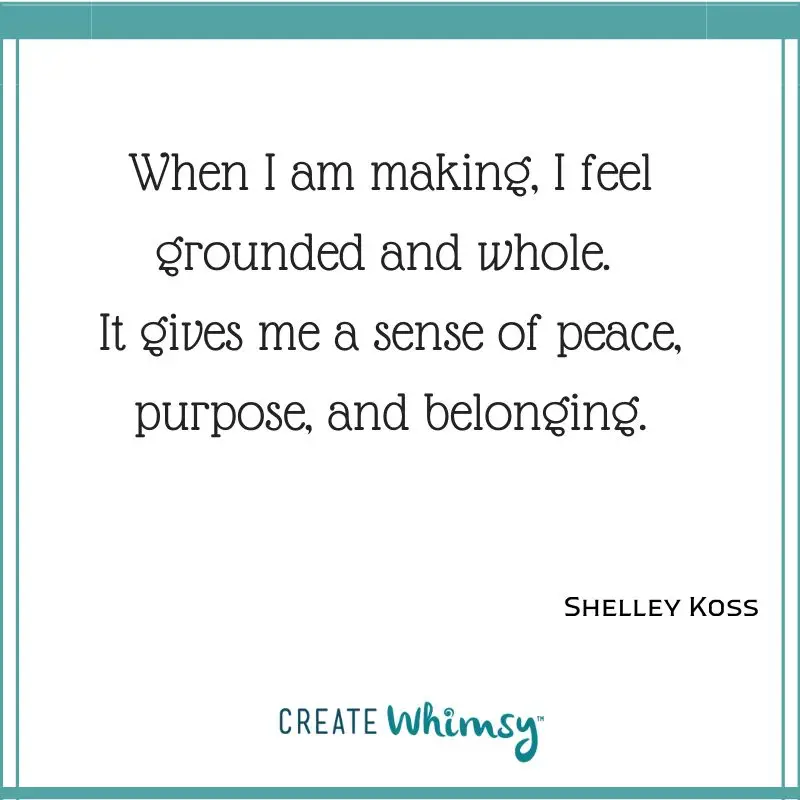
If you could give your younger artist-self one clear piece of advice, what would it be?
You will be born with imposter syndrome, and you will likely die with imposter syndrome. Get over it and just create.
Where can people see your work?
My website www.shelleykossart.com, @shelleykoss on Instagram, and @shelleykossartist on Facebook.
My work can be viewed in person in exhibitions at The Bower Willo, The Summit, Portland on the Park, Vision Gallery, as well as in my studio gallery by appointment in Phoenix, Arizona. My work has been traveling with AQS exhibitions for the past three years as well, and those shows hit many different cities each year.
Interview posted November 2025
Browse through more inspiring spotlight interviews on Create Whimsy.

